Carb cycling is the foundation of what I do every day and with every client. I know through years of experience with many different clients that carb cycling works, so I’m going to introduce you to the basics and the five different carb cycling plans—Easy, Classic, Turbo, and Fit, and Extreme. I’m stripping it down to the basics to get you started:

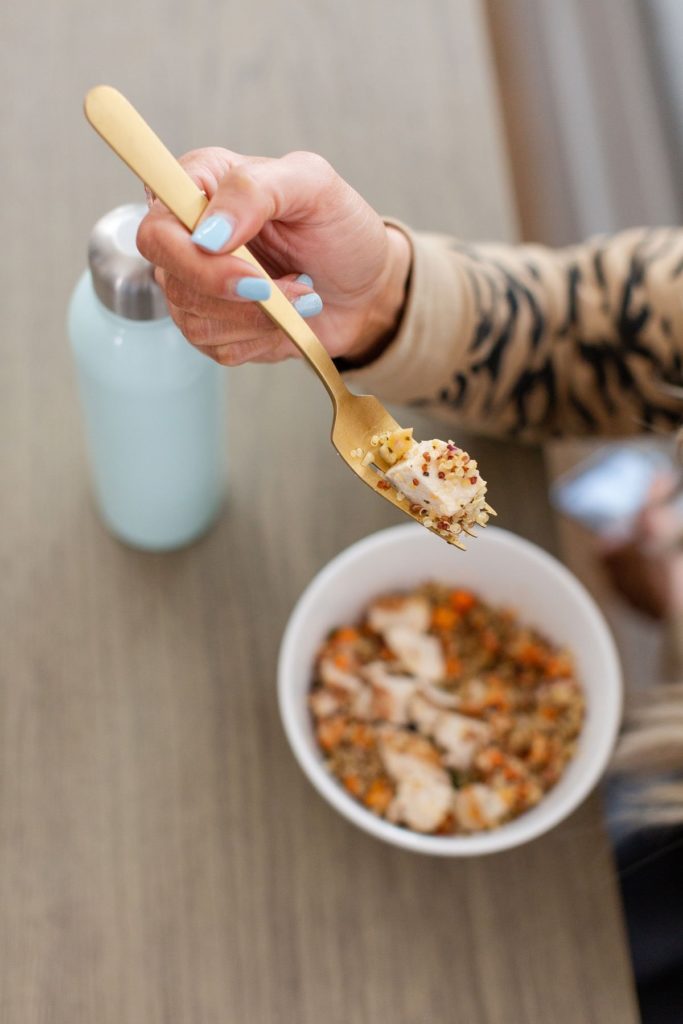
What is Carb Cycling + How Does it Work?
Carb cycling is an eating plan with alternating high carb and low carb days. It’s that simple. It also has built-in reward days or reward meals (depending on the plan you’re following), so you can still eat your favorite foods on a regular basis. Sounds pretty much perfect, right? You can eat healthy foods, enjoy foods you love, and still lose weight.
While each plan has a different mix of high carb and low carb days, each day works basically the same:
- Eat five meals—no more, no less.
- Eat breakfast within 60 minutes of waking or whenever your feeding window opens if you’re an intermittent faster.
- For breakfast, you’ll eat a portion of protein, carbs, and fat.
- For your next 3 meals (snack, lunch, snack), you’ll eat either a low or high carb meal depending on which day you’re on. So, if you’re on a low carb day, those three meals will be low carb. If you’re on a high carb day, those three meals will be high carb.
- Your last meal of the day will ALWAYS be a low carb meal. Always.
- Choose approved foods.
- Drink ½ your body weight in ounces of water every day. So, if you weigh 150 lbs, you’ll drink 75 ounces a day.
How Does Carb Cycling Work?
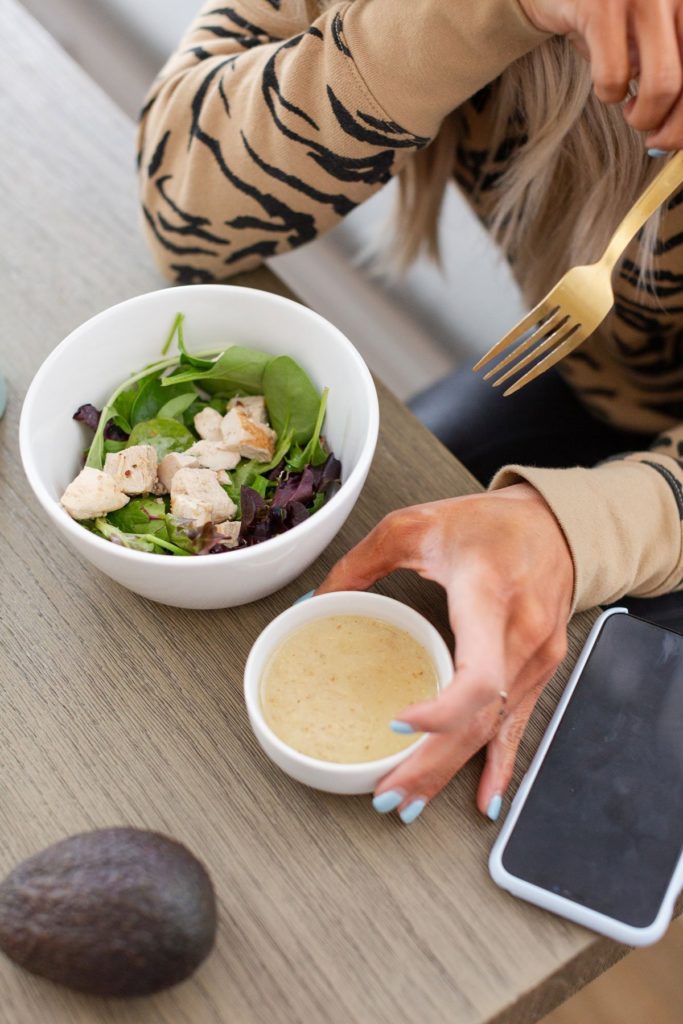
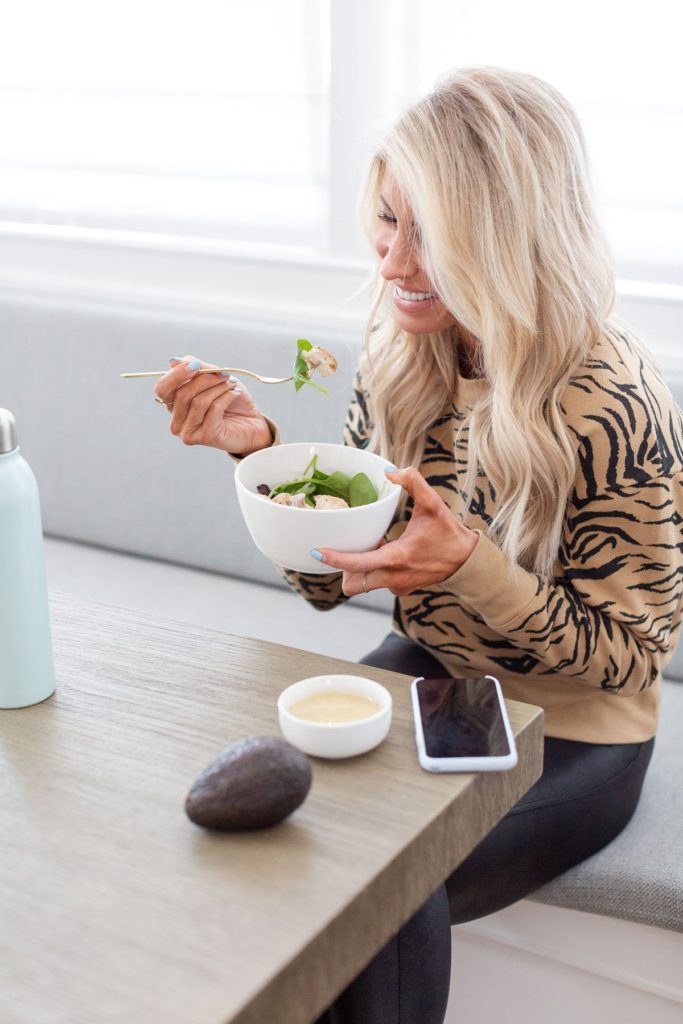
Carb cycling is based on the right combination of proteins, carbs, and healthy fats. In order to lose weight, our bodies need the right combination. Here’s why:
- Protein builds and maintains muscles and these muscles burn calories like an inferno. Protein also breaks down more slowly than carbs and fat, which burns even more calories and helps you feel fuller longer.
- Carbs are the preferred fuel source for your muscles and organs, and they come in healthy versions (vegetables, fruits, grains, and legumes), and not-so-healthy versions (cakes, cookies, soda, doughnuts, candy, and many processed foods). Healthy carbs are also crucial for burning calories, and since they break down more slowly than those not-so-healthy carbs, they keep your blood sugar and energy levels steady, and they also keep your calorie-burning furnace hot so it burns more calories!
- Healthy fats (unsaturated fats) eaten in moderation help the development and function of your eyes and brain and help prevent heart disease, stroke, depression, and arthritis. Healthy fats also help keep your energy levels steady and keep you from feeling hungry.
Why do we alternate high carb + low carb days in carb cycling?
On high carb days you’re stocking your calorie-burning furnace so that on low carb days your furnace burns fat, and lots of it! This pattern tricks your metabolism into burning a lot of calories, even on those low carb days. It’s an amazing and well-proven process.


What are the Benefits of Carb Cycling?
Carb cycling has many benefits:
- It fits any lifestyle.
- You’ll learn how to shed weight and body fat and how to make smart lifestyle choices for the rest of your life. This puts YOU in control.
- You’ll feel better and have more energy.
- You’ll eat the foods you love.
- You’ll build lean, strong muscles.
- You’ll be empowered physically, mentally, emotionally, and spiritually.
I’ve only skimmed the surface of carb cycling, so learn more about our five carb cycling plans to find your ideal cycle, and let’s get cycling!
Get even more information on carb cycling in both or our books: Extreme Transformation (the newest edition to our carb cycline lineup featuring the Extreme Cycle) and Choose More, Lose More for Life (which features our other four cycles).
If you’d like some help creating your own meals, there’s a handy “Create Your Own Meals” chart in this post! To get a customized cycle for you and your goals + several workout programs (from gym-based to bodyweight to dance) + the all-important life lessons (the key to long-term transformation), check out The Transform App.
Note: If you’ve been carb cycling using our book, Choose Lose More, Lose More for Life, you’ll notice that we’ve changed a couple of things since that book was published: You now include a fat for breakfast, and every final meal of the day is a low carb meal. Like with a lot of things in life, the more you do them, the more you learn about how to do them even better!
xo,

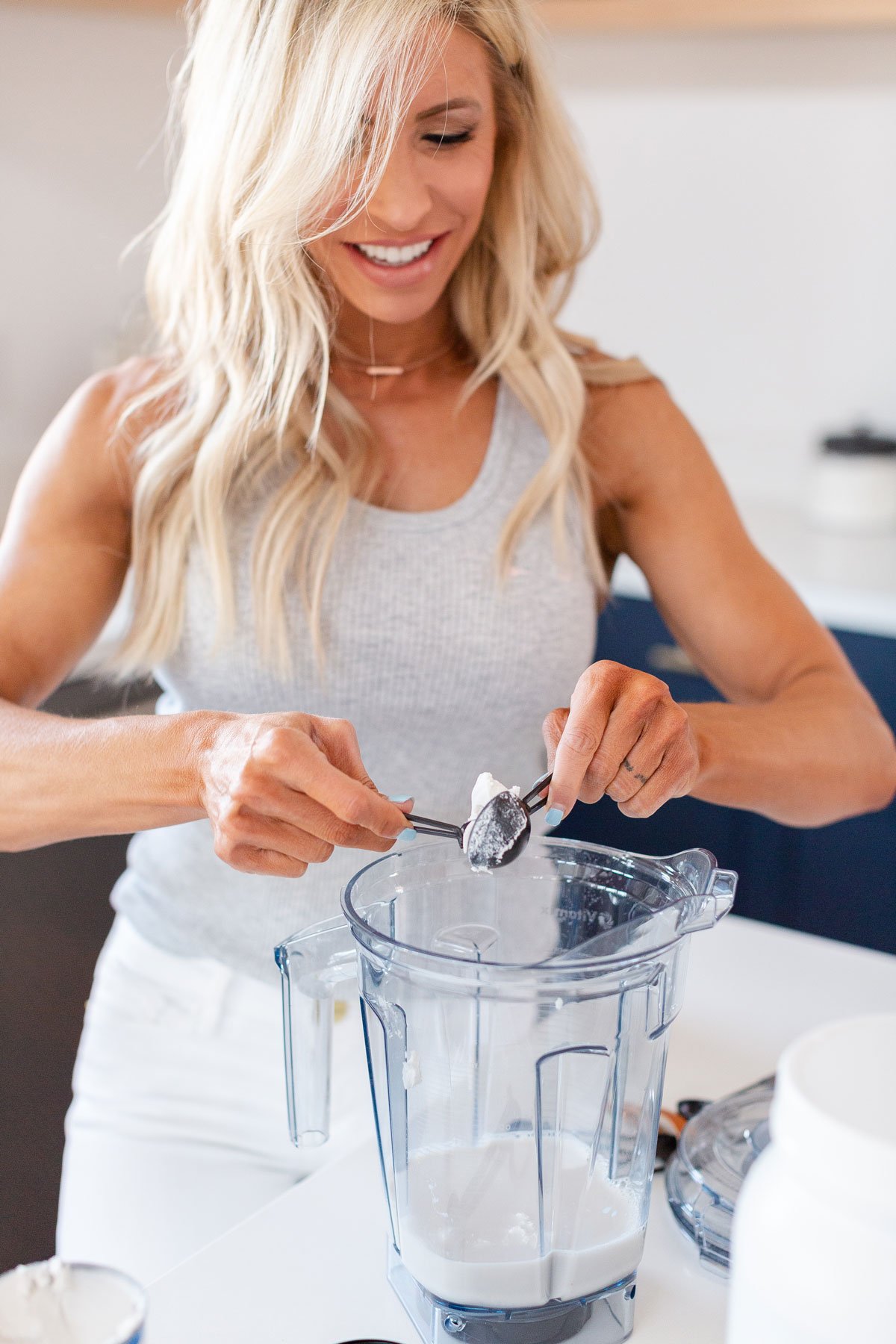

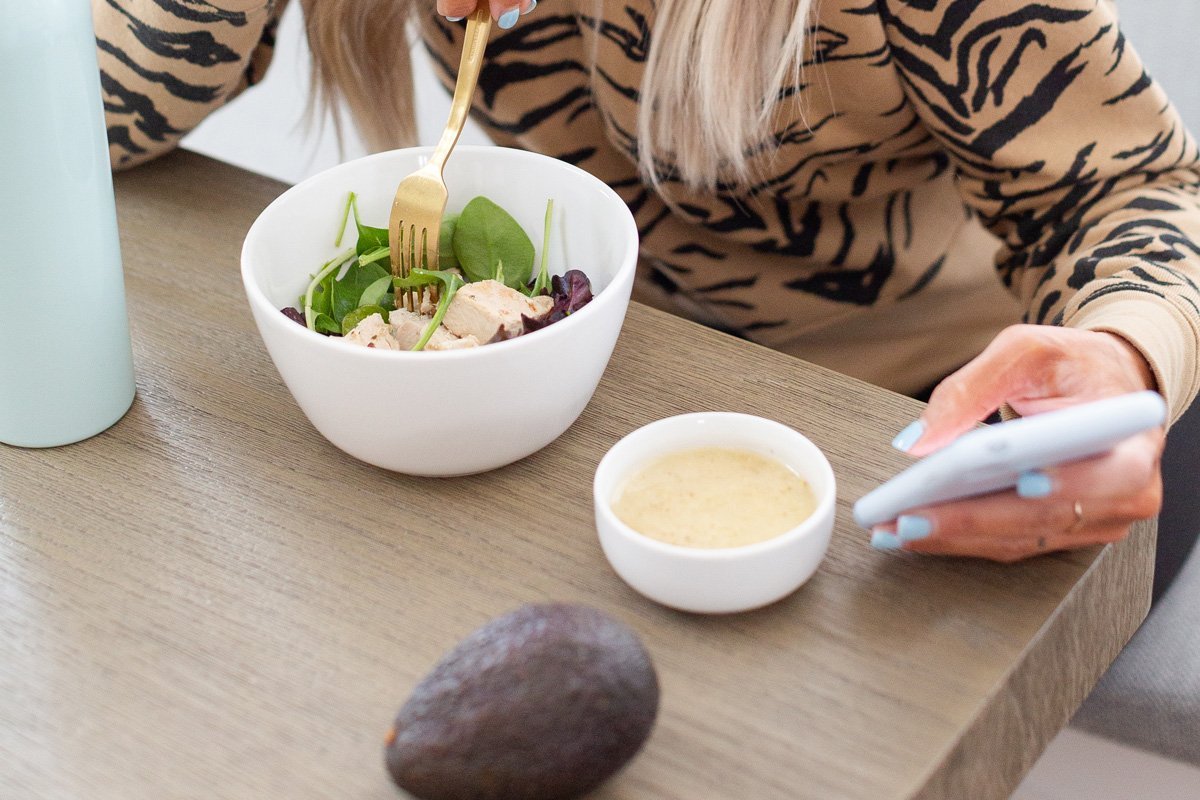

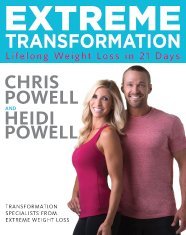


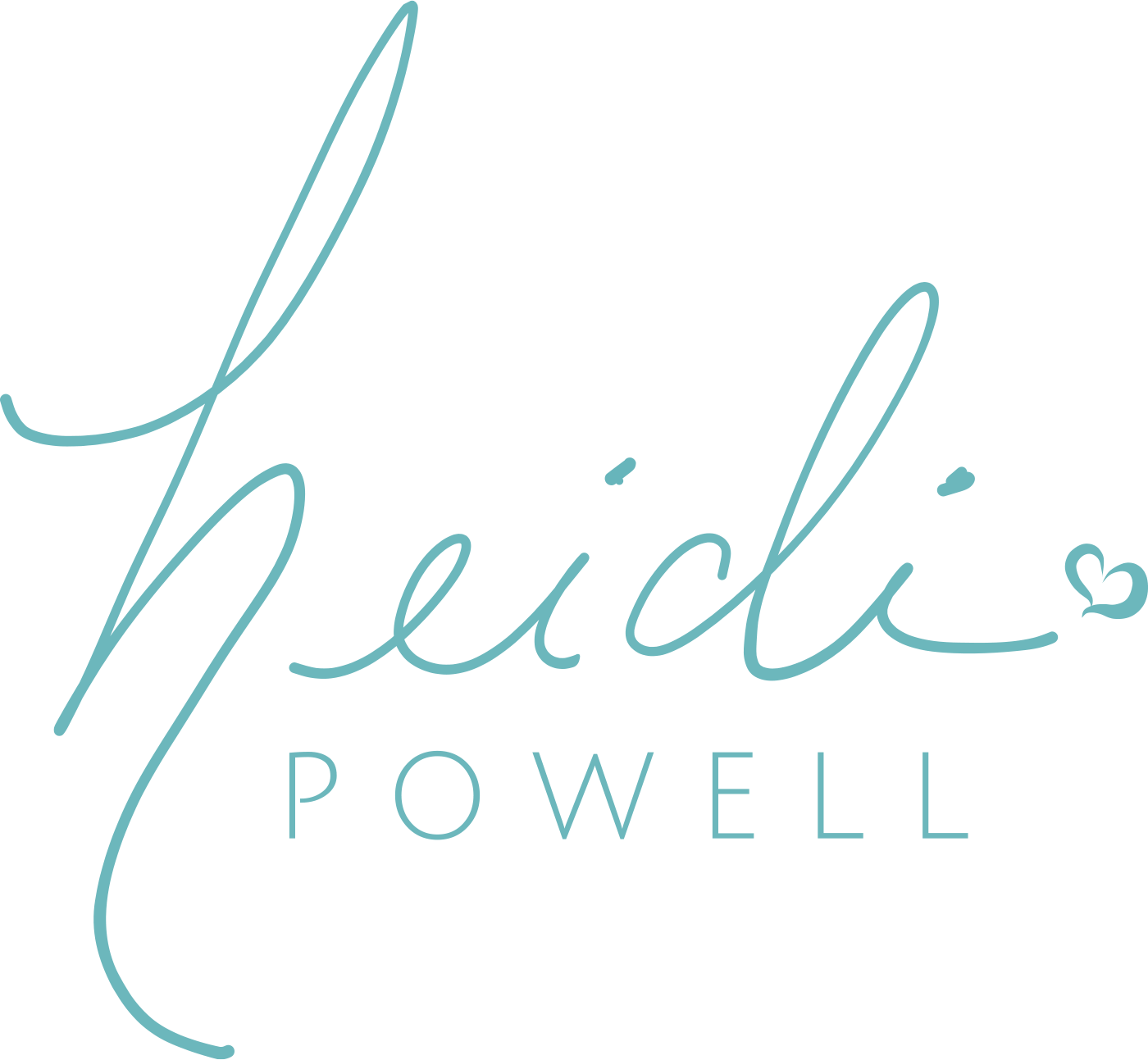
1,394 Responses
On average I burn between 500-750 calories per workout (3-4 times per week) on the days that I workout, do I need to add more calories to my diet? I am following the Classic Carb Cycling 1200 low carb, 1500 high carb. I use my fitness pal to keep track of macros, but when I plug in my workouts it adds more calories to eat. Should I stay in the deficit or make sure to eat more?
Hi Taryn: You don’t want to add any calories to make up for calories burned. These add to your calorie deficit, which leads to lost pounds. It’s like this: calories consumed – calories burned = calorie deficit (lose weight) -or- calorie surplus (gain weight). You can do this!
I read that while nursing you’re supposed to eat between 2000 to 2500 cal per day but I wanted to do your extreme carb cycling program what would you advise?
Hi April: Here’s a post that outlines Heidi’s breastfeeding nutrition program: https://heidipowell.net/2275. Hope it helps!
How many net carbs should one eat on High Carb and Low Carb days?
Hi Rachael: Chris and Heidi have figured out all of your macros for you in carb cycling (for both low- and high-carb meals) for the Easy, Classic, Turbo, and Fit Cycles, so you don’t need to worry about tracking them. However, if you’d like to count your own macros, here are some general recommendations: High-Carb Meal: Protein: 40%, Carbs: 40%, Fats: 20%. Low-Carb Meal: Protein: 40%, Carbs: 20%, Fats: 40%.
I hope this helps!
Hello! I’ve decided to follow the Turbo Cycling Plan but my confusion is around the reward day. Obviously, this day isn’t for eating 5,000 calories but how much of a reward day should this be? I know that’s a very general question but are there any “general rule of thumb” ideas behind reward day? Also, could this day be a break from work outs or should I definitely get a work out in on reward day? I would assume yes but might as well ask 🙂 Thanks!
Hi Katie: Welcome to carb cycling! On your reward day, you can eat up to 1,000 extra calories for a total of 2,500 calories for that day. Since your reward day is scheduled on Sundays, and since there are no workouts scheduled for those days, you can take a rest day. Hope that helps!
Hi Heidi and Chris!
First of all, I love the new book from what I am through so far. I know for your carb cycling plan you provide a portions list that will help for high/low carb days. I feel like I am where I want to be in terms of weight, but I would like to continue to gain muscle and cut fat. Is there a certain calculation or method you use to get your specific macros that is more fine tuned when working towards those goals? I have looked online at a few different calculators and the results vary slightly from each. I definitely like your information on carb cycling best, but I looking now to burn fat and continue to see definition. Thank you both so much for being so inspirational!
Hi Kelly: Congratulations! Here’s a post that might help: https://heidipowell.net/5137. You’ll have to tweak what you’re doing depending on the results you’re getting, but you can add in more strength training to build muscle, keep doing cardio to burn calories, and make sure that you stay on point with your nutrition. There’s not really a hard/fast equation since each person is at a different place with a different body composition. Hope this helps!
quick question!
Any help or advice for anyone who works 12-16 hour night shifts? Sometimes i am up almost 18 hours a day so can i add an extra snack/meal in for my nights to get me through?
Thank you!!!!!!
Hi Tara: Here’s a post that can help you figure out how to plan your meals with a crazy schedule: https://heidipowell.net/10556/ask-the-powells-how-can-i-structure-my-meals-2/. Hope it helps!
Thank you that helps a lot and I just bought the book!! 🙂
Hi. I have a question regarding the 100 calorie portion food lists.
After 3 weeks on the Extreme cycle, I didn’t lose anything during week 2 or 3 so I decided to switch to the Turbo cycle and after 1 week I finally had a loss. The recipes in Choose To Lose are pretty simple giving the exact amount of each ingredient to use. In choose More Lose More, the recipes use hand portions. I use Myfitnesspal and I’m kind of anal about knowing exactly how many calories each item has so I’ve always measured and weighed everything. I don’t use hand portions.
In the recipe section of Choose More Lose More it has a “Carb-Cycling Portion Conversion: Average Per-Meal Estimates” chart using hand portions that says for a woman a protein portion is 3 oz, carbs is 1 cup, veggies 2 cups and fats is 1 Tbsp. It then gives food lists in 100 calorie portions. The recipes include a protein and then I have to add a carb or fat (depending on the day). For whatever food I choose to add, do I use the specific amount shown in the 100-calorie lists? I’m confused because that first chart says a hand portion for carbs is 1 cup but in the list rice for example is 1/2 cup. Also the protein weights (2 oz salmon, 2.5 oz white fish, etc) seem so low it seems it would be hard to reach the 40% target for the day. Unless those are cooked weights.
Hopefully that wasn’t too confusing to follow. 🙂
Thanks!
Hi Leslie: You’ll use the portion size guides when putting your meals together. The 100 calorie guide is for general reference, and it was less confusing to list everything in those calorie amounts than to have many different calorie amounts. Here are some macro guidelines for the Turbo Cycle that might be helpful for you: High-Carb Meal: Protein: 40%, Carbs: 40%, Fats: 20%. Low-Carb Meal:
Protein: 40%, Carbs: 20%, Fats: 40%. And congratulations on losing some lbs! ?
How do you know which cycle plan to start out on?
Hi Brandee: There are links within this post to each of the cycles so you can read through each one and see which one will work best for you and your goals. And you can change cycles at any time, so the program is totally flexible!
Hi there, I’m based in the UK, watch the show and own choose to lose. I have coeliacs and hashimotos and due to this 30lbs to shift. I’m a bit unsure about how many carbs I should be aiming for on low carb days and high carb days as I try to keep track. Also due to my medication I can’t eat anything for an hour upon waking as that’s how I have to take my med does this have a big impact as I normally skip breakfast altogether but am trying to eat now? Any advice would be fab xxx
Hi Leanna: There’s an awesome graphic in this post that outlines how to put your meals together: https://heidipowell.net/4514. And follow your doctor’s recommendations for your medications and you’ll be fine!
I just bought a couple of the carb cycling books, but I have a silly question…what is “Spray Butter?” (I ended up here after doing a Google search for it). I found an artificial “butter-flavored” spray (I Can’t Believe it’s NOT Butter), but nothing that is “spray butter.” I’m just not sure this stuff is “Spray Butter.” Thanks!
Hi Connie: So sorry for the confusion! Do a Google search for “butter spray” instead, and then use the image option. You’ll find several options to choose from and most should be at any grocery store. Hope that helps!